Battlefields are a preeminent “dark matter.” Our Birmingham colleagues, John and Patricia Carman, have provided the following thoughts and photos, based on their long-time work on battlefields and see their new book: Battlefields. From Event to Heritage (Oxford University Press, 2020).
Battlefields occupy an ambiguous place in ‘dark’ heritage and tourism. While some are considered as cemeteries for the large numbers of those slaughtered in war – the battlefields of the World War One Western Front spring to mind – and invoke grief (Figure 1), others are recalled as sites of more positive outcomes, especially victory for one’s own nation (Figure 2). The distinction is between commemorative and celebratory practice. 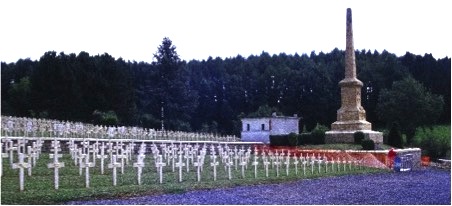 Figure 1: Sedan, France: obelisk commemorating the dead in the battle of 1870 – a French defeat – adjacent to the World War 1 cemetery.
Figure 1: Sedan, France: obelisk commemorating the dead in the battle of 1870 – a French defeat – adjacent to the World War 1 cemetery. 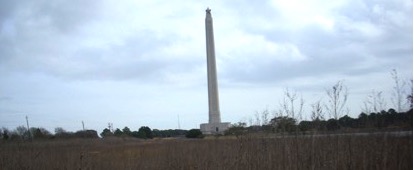 Figure 2: San Jacinto, Texas, USA: monument to the Texan victory in 1836.
Figure 2: San Jacinto, Texas, USA: monument to the Texan victory in 1836.
Between these two extremes lie those places where the primary message is one of hardship and sacrifice at the service of a ‘noble’ cause. Here, the memory may be tinged with regret but the memory of the event carries no strong negative associations (Figures 3 and 4). 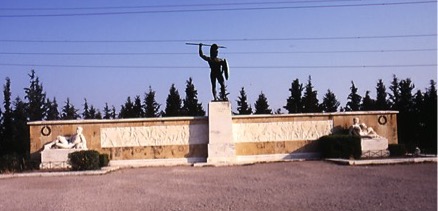 Figure 3: Thermopylae, Greece: monument to the 300 Spartans who died defending the pass in 480BC. Raised by Greek Americans in their memory in 1963.
Figure 3: Thermopylae, Greece: monument to the 300 Spartans who died defending the pass in 480BC. Raised by Greek Americans in their memory in 1963. 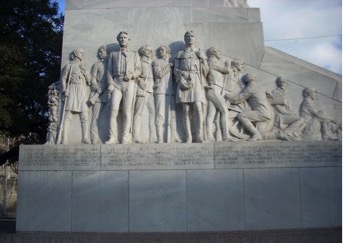 Figure 4:
Figure 4:
San Antonio, Texas, USA: monument to the defenders of the Alamo in 1836, a heavily mythologised event. The remains of the fort itself are declared a shrine.
Others yet may be almost completely forgotten except to those who have a particular interest, usually in aspects of military history. July 2008 was the 300thanniversary of the Battle of Oudenaarde, fought in the fields north of the Belgian town that gives its name to the fight (Figure 5). It was the largest land-battle to be fought anywhere in Europe before the early 19thcentury, causing large numbers of casualties. It also established the borders of what would become Belgium. Descendants of the inhabitants at the time still farm the same land. 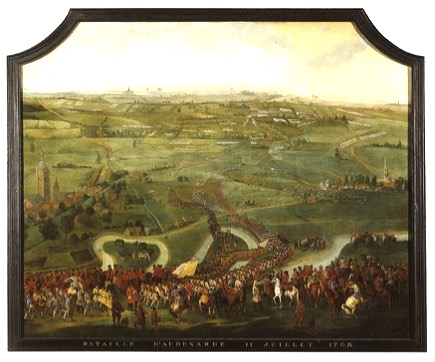 Figure 5: The Battle of Oudeanaarde, 1708, as depicted in a contemporary painting held in the Town Hall at Oudenaarde, Belgium and put on display in July 2008 as part of the 300thanniversary of the battle. Image courtesy of the Ename Center, Oudenaarde.
Figure 5: The Battle of Oudeanaarde, 1708, as depicted in a contemporary painting held in the Town Hall at Oudenaarde, Belgium and put on display in July 2008 as part of the 300thanniversary of the battle. Image courtesy of the Ename Center, Oudenaarde.
And yet – it was not until a member of the town council saw the tourist potential of hosting a commemoration that many of those who live there came to know of the event that had taken place on their land and in some cases even in the buildings they inhabit. The event was successful in attracting visitors to the town, as well as short-lived local interest. But it was not as ‘dark’ heritage – the ten thousand dead that lie under the tranquil fields were never considered. Instead it was as an interesting historical event of no significance to locals or visitors providing an opportunity for enjoyable days out (Figure 6). 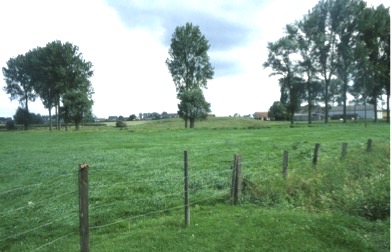 Figure 6: A battlefield site in reality. Oudenaarde, Belgium: site of the battle of 1708; the mound is the vantage-point used by the victorious commander to survey the battlefield.
Figure 6: A battlefield site in reality. Oudenaarde, Belgium: site of the battle of 1708; the mound is the vantage-point used by the victorious commander to survey the battlefield.

